How to Become a Ski Instructor in New Zealand
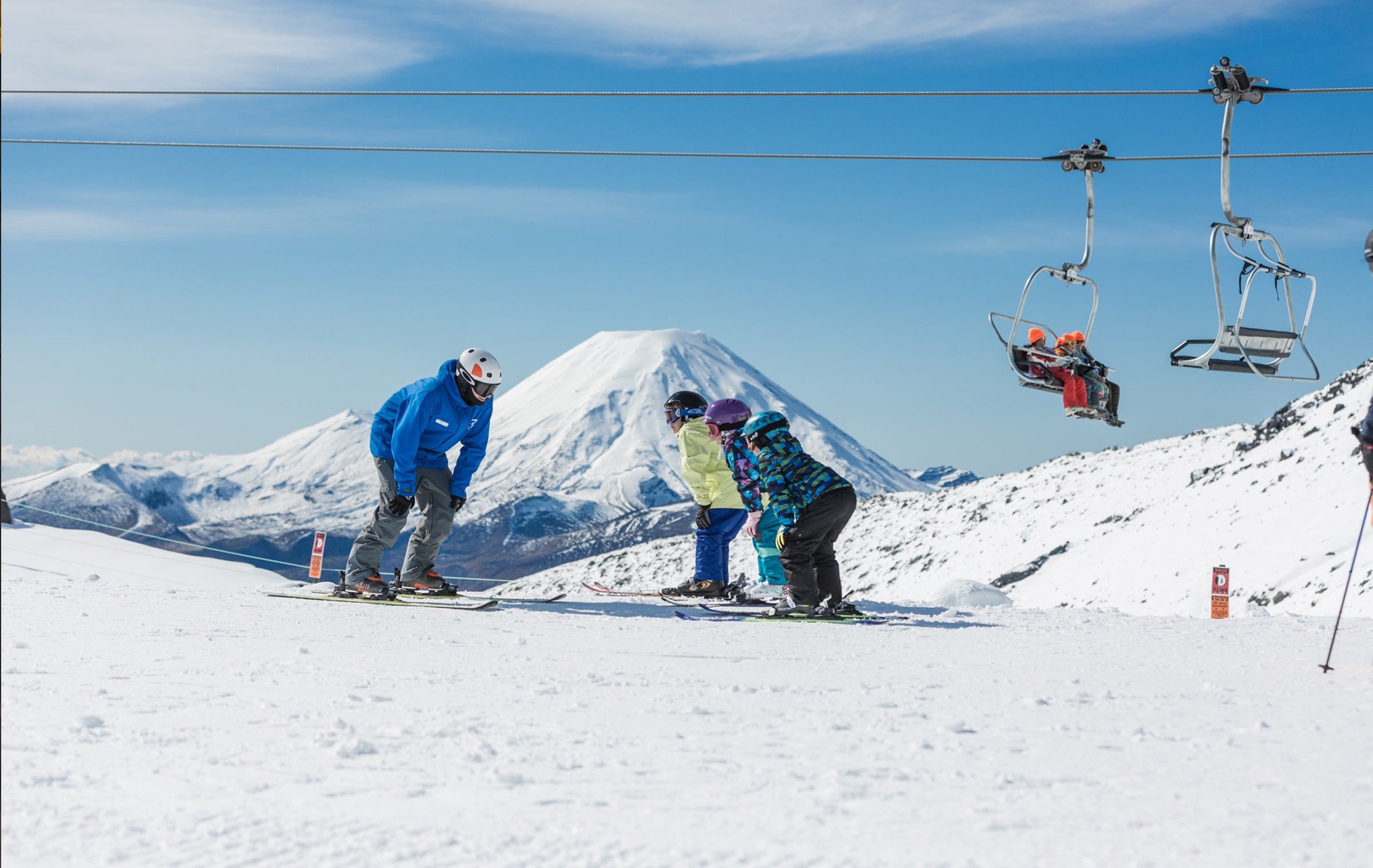
Mikaela Shiffrin seen during the FIS Alpine Skiing World Cup Slalom in Flachau, Austria on January 09, 2018 // Erich Spiess/ASP/Red Bull Content Pool // AP-1UDR7Q2SS2111 // Usage for editorial use only //
Kia ora! Becoming a ski instructor in New Zealand is truly a win-win: You’ll get to explore a new country for months at a time, plus play in the snow during what would normally be summertime for North Americans. At the end of the season, you’ll come away with a whole new vocabulary; more experience professionally ski instructing for the coming winter; plenty of kiwi friends with the most endearing pronunciation of the letter “e;” and so, so many postcard-worthy photos.
In 2019, from mid-June to the beginning of October, I became a ski instructor at Turoa, a ski field on the southwestern slopes of Mount Ruapehu—a live volcano—on New Zealand’s North Island. There was plenty of rain and fog, but the good days were so good—I’ve never had so much fun on any other terrain. There’s not a single tree in sight, but what the mountain lacked in tree skiing it more than made up for in an absolute playground of natural features: kickers, mini halfpipes, cliffs, gullies, and wide-open spaces to rocket down as fast as possible.
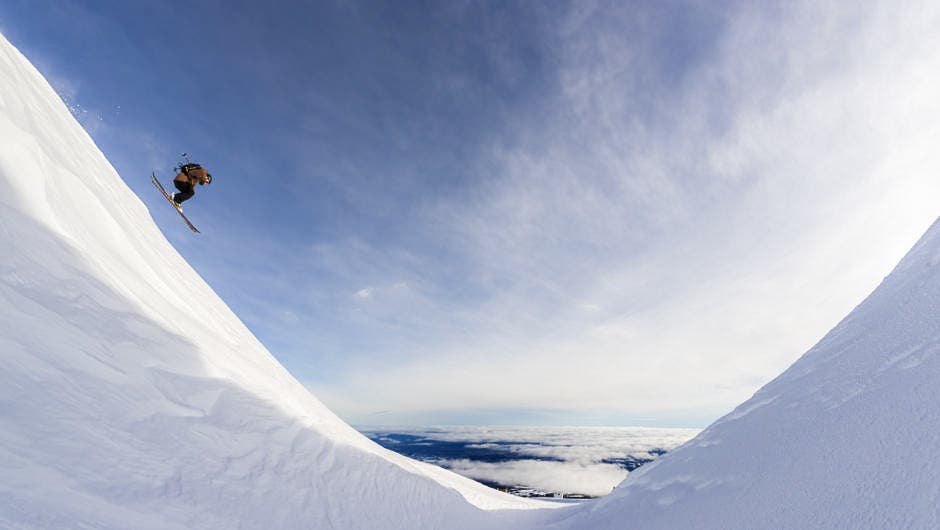
On my days off from ski instructing and freeskiing, I soaked up the culture, explored the pristine wilderness, and made what I hope are lifelong friendships. For anyone thinking of doing a season of ski instructing in New Zealand, check out the guide below that covers certifications, applying for jobs, getting a visa, finding housing and transportation, and how skiing in the Land of the Long White Cloud compares to what we’re used to. Sweet as, bro!
First things First: Get Certified
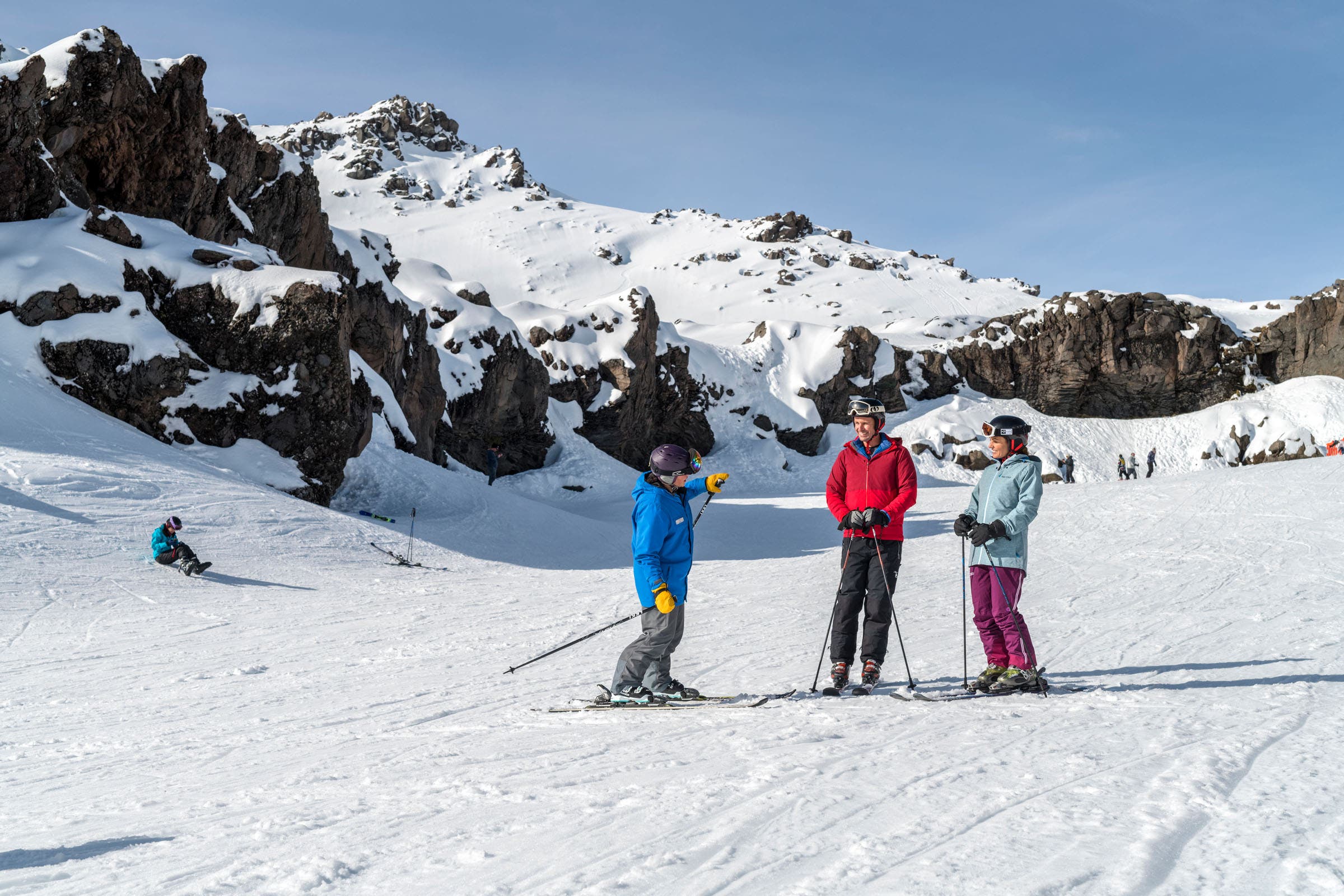
You must have certifications to teach abroad. Depending on where you’re from, you could get your ski instructor certification from the Professional Ski Instructors of America (PSIA) in the States, from CSIA in Canada, BASI in the UK, or NZSIA in New Zealand. These organizations all work with the International Ski Instructor Association, and allow holders to work across the globe.
To get a job there if you’re not born and raised in New Zealand, you’ll most likely need a Level 2 certificate. If you already have a Level 2 plus a Child Specialist, consider going for your Level 1 Snowboard or an Adaptive cert to make you a more competitive candidate and give yourself more opportunities for work once you’re there.
If you’re dismayed that you aren’t anywhere close to being certified, there are some programs like Snowmind or EA Ski and Snowboard that include a certification course and then lead to a guaranteed ski instructing job.
Apply and Get Job Offers
After getting your ski instruction certifications, start applying to ski resorts just as early as their websites put out job applications, which is usually in January or February. There are four main employers to look into: NZSki (which owns Coronet Peak, Mt. Hutt and The Remarkables) on the South Island; Cardrona Alpine Resort and Treble Cone, both of which are on the South Island; and Mt. Ruapehu, which owns Turoa and Whakapapa—widely pronounced “fukka-papa,” which everyone tries to ignore—on the North Island.
There are other smaller resorts as well, but your chances of getting hired as a foreigner and actually teaching are probably better at the larger ones.
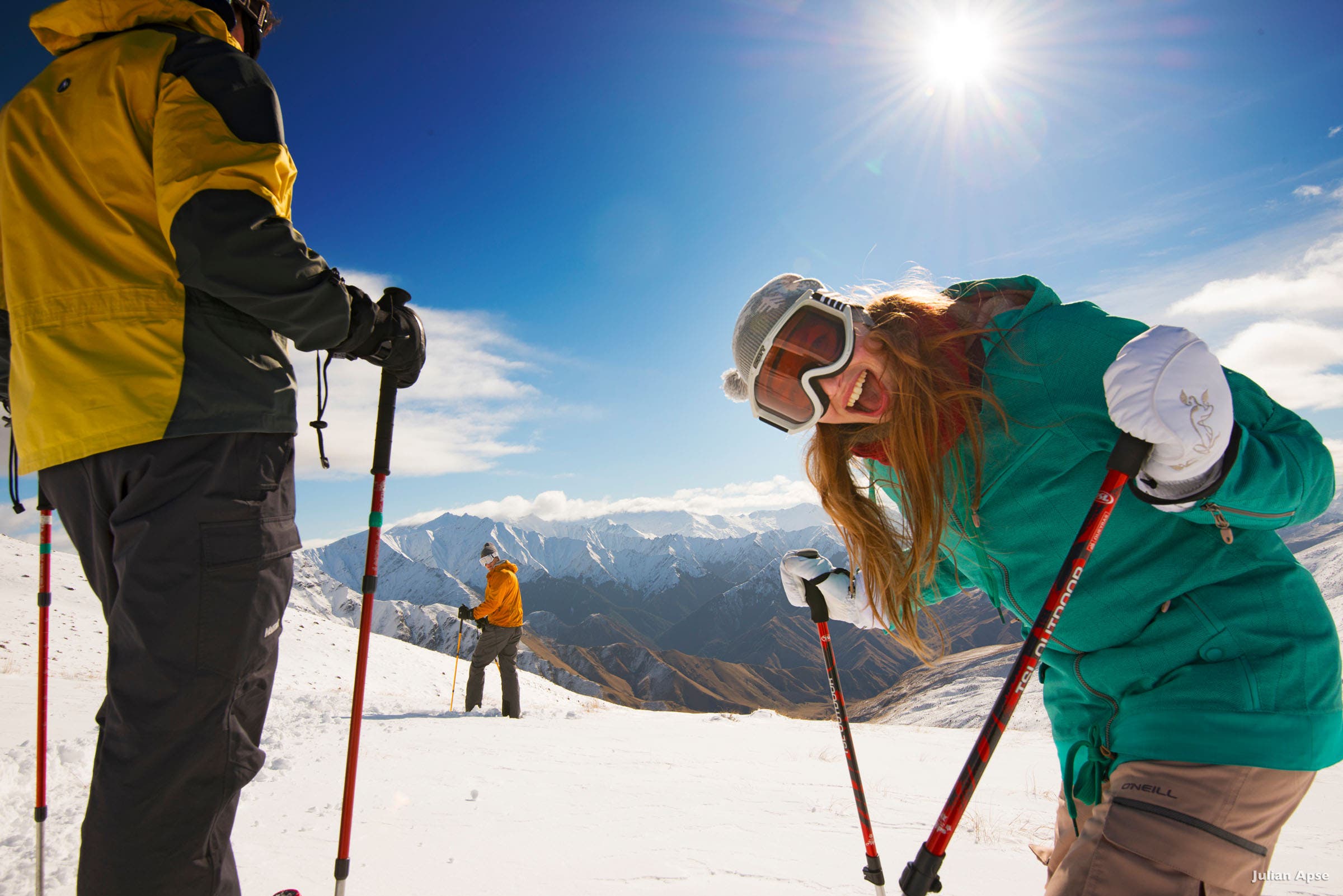
Once you apply, wait to be asked for an interview. Don’t immediately be deterred if you read that they expect in-person interviews; Skype worked out for me once they figured out that I’m halfway across the world. Ask good questions and show that you care about the resort by having researched it beforehand. By mid-February to mid-March, you should know what your options are.
You aren’t expected to get a visa before applying—if they ask, just tell them you’ll get one upon employment.
How to Get a Visa to Ski Instruct in New Zealand
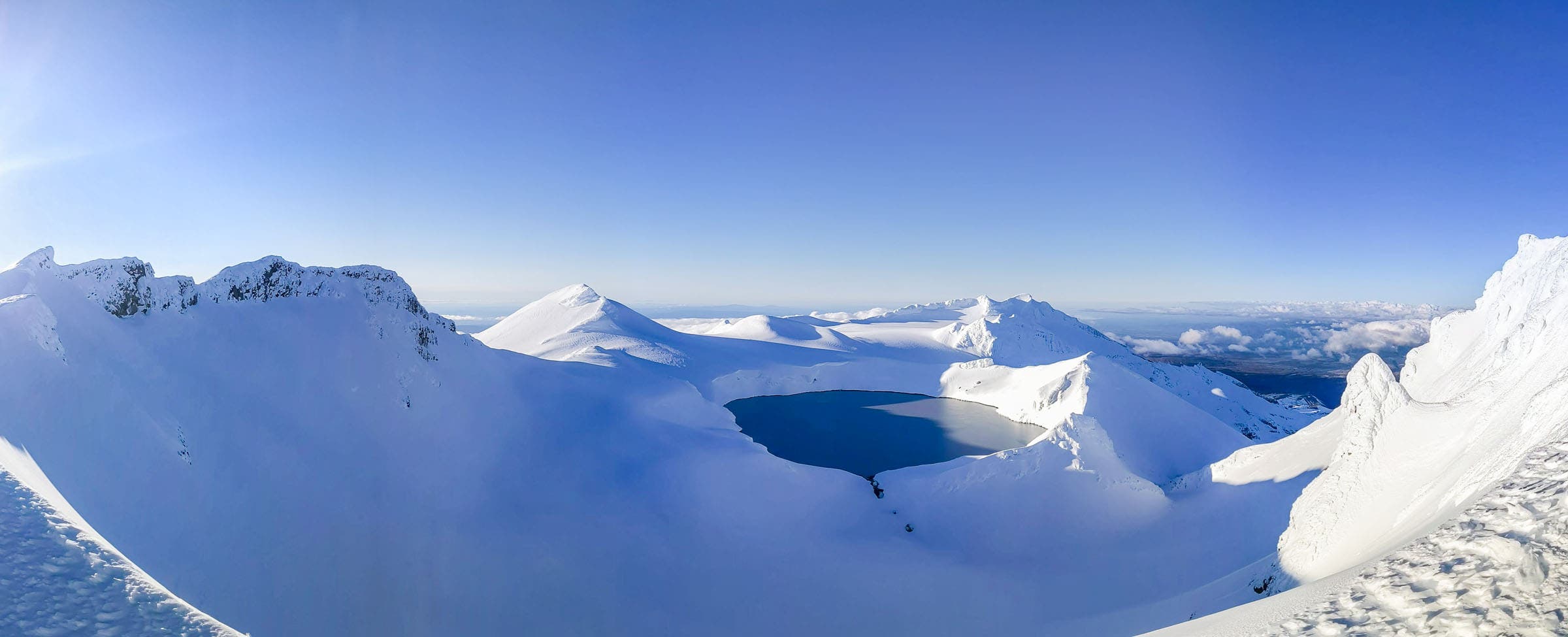
You can’t just bop down to New Zealand as a ski instructor and start making money there—you’ve got to get some sort of visa for that. There are two options: a working holiday visa or an essential skills visa.
US citizens 18-30 years old who can show they have enough funds for the trip there and back can qualify for a working holiday visa, which allows a stay in New Zealand for 12 months upon arrival. I was never asked to show proof of funds, but you should probably have around the amount they ask for saved up anyway, especially if you want to travel in comfort and with plenty of options. If you apply online and outside of New Zealand, the application fee is waived, which is truly a win-win since you probably didn’t want to have to leave your house anyway. I received mine only a few days after I applied on the official New Zealand government website.
If you get a job offer but you’re older than 30, your employer might choose to sponsor you. In this case, you can apply for an essential skills visa, as long as you plan to work full time and have prior ski instructing experience.
There are a few extra caveats to this application process due to COVID-19. From what I understand, a Level 3 certification is now required for an essential skills visa, and employers themselves must prove that they’ve tried to hire New Zealand citizens before offering you the job. Whether these restrictions will continue in further years remains to be seen. Find out more about the application process.
Before you can get paid, you will also need to open a New Zealand bank account and get an Inland Revenue Number (IRD) for tax purposes. The ski resort’s HR should walk you through this.
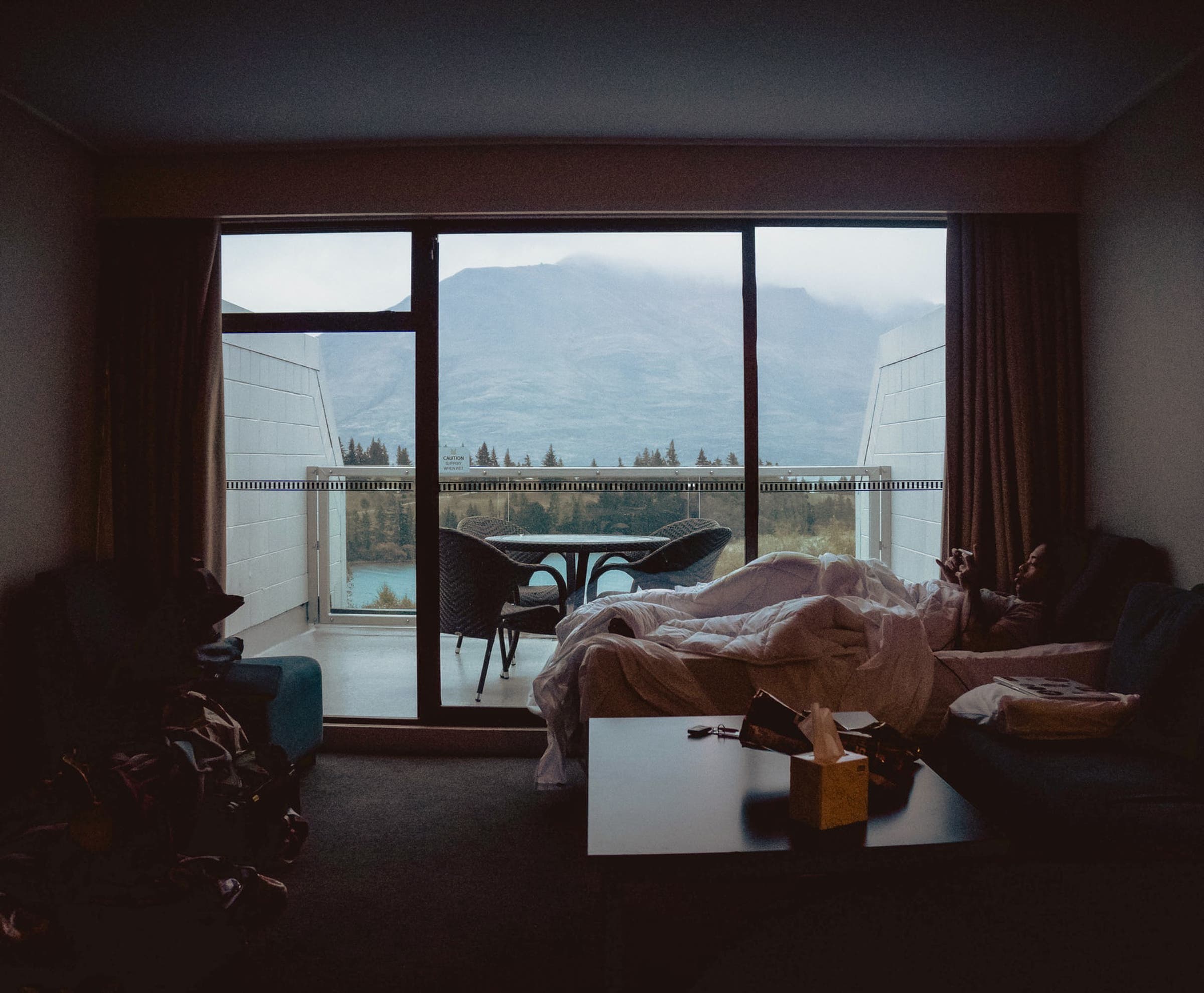
Find a Place to Live
Because housing is very tight on the North Island—and even tighter on the South Island—start looking for a place to live as soon as you get your job offer. I used mostly local Facebook groups to look for a room to rent, and once I did a few Skype interviews and Venmo’ed my new landlady a deposit, I settled down to wait for the season. It was all very informal: no one that I met there actually signed a lease, possibly because kiwis don’t have the same obsession with lawsuits as Americans do (as I was cheekily reminded many times while there).
I paid $200 NZD per week for my room, which was easily covered by two days of work. One nice thing about instructing on the North Island is that the employers there guarantee a minimum paycheck for their employees so that even if the mountain closes on wild weather days, instructors will be able to cover their housing. Use sites like TradeMe or HouseMart to get started.
Flights to New Zealand
Somewhere in the process of securing housing, you’ll need to buy a flight to Aotearoa (the Maori name for New Zealand). It’s not totally necessary to wait until you’ve secured housing to buy your tickets, but it might bring you extra peace of mind. I bought a one-way ticket so that I would have flexibility on my return date. Using a combination of Hopper, SkyScanner and Kayak, you should be able to find plenty of flights that won’t break the bank. Be sure to check on current pandemic-related travel restrictions as well.
Side note: It’s not uncommon for people to arrive a month or two before they’re due to start work, check in to a hostel, and find housing in person. If you do find a place before you arrive, it’s still a good idea to get there at least a week ahead of time.
A Quick Note About Gear
If you’ve never flown with your skis before, invest in a good ski bag (with wheels!) and boot bag. If you’re hoping to travel unencumbered before the season starts, you could look into purchasing a locker at the airport or buying gear once you arrive on sites like TradeMe.
Don’t put much hope in the idea of doing a season-long rental—not on the North Island or if you want professional-caliber gear. Traveling at the end of your season might be easier, as you can always just ask to stow your gear with one of your new kiwi friends until you leave.
Related: Used and Abused – SportTube Ski Shield Roller Bag
Carried Away: More Great Luggage Options for Skiers
Wages
As of July 2020, the minimum wage in New Zealand is $18.90 NZD per hour. I got paid about two dollars above minimum wage for teaching hours (Remember: the more ski instructor certs you have, the more you’ll get paid).
It’s definitely wise to come into the country with some savings if you want to do any sightseeing, but understand that a season here is mostly about the experience, not about the money. My very skimpiest paycheck was around $200 NZD and the heftiest was a bit over $1,000, with the rest falling between $600 to $800 NZD.
Also, tipping culture is not a thing at New Zealand ski fields, so don’t take it personally if you go the whole season without a tip.
Transportation
From the airport, you’ll probably want to take a bus or train to your next destination. If you plan on traveling before or after the season, you can look into getting a Stray bus pass, which is one of the more expensive ways to travel around New Zealand but it allows you to hop on or off the bus whenever and wherever you like for 12 months, with the bus drivers acting as guides and storytellers at the same time.
As for getting to work once you’re settled in, there are a variety of options. North Island resorts encourage employees to use the free shuttles to get up the mountain, and several of the South Island resorts have shuttles as well, although they’re usually not free.
If you don’t want to get a car, it should be easy enough to hitch a ride with local coworkers up to the mountain, and to nearby cities on your days off. If you do want to get a car, which will give you more options overall, it’s pretty easy in New Zealand. Do some research before arrival, and don’t forget to drive on the left side of the road!
Most Importantly, What’s the Skiing Like?
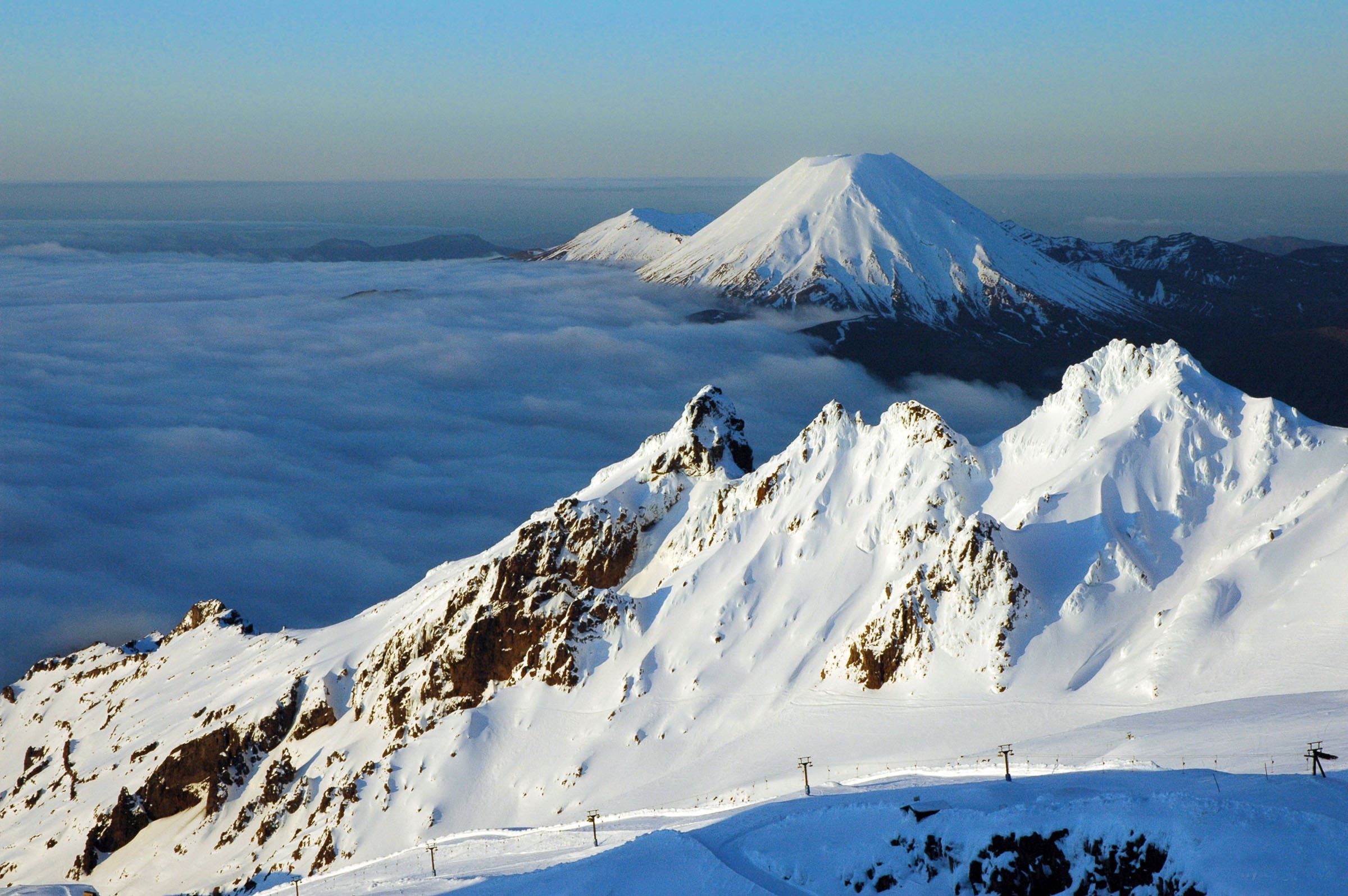
The snow may not be what you’re used to, but the terrain in New Zealand is world-class. Out of bounds skiing is expected at Turoa, and it is just disgustingly fun. August is the best month for powder, and, thanks to the longer and warmer days, September is the best month for backcountry skiing. Spring skiing is the stuff of local legend. And you couldn’t get away from the majestic mountain views if you tried.
Snow-wise, the conditions on both islands are much more like the wet West Coast of the USA thanks to the lower elevation of the mountains. Even so, pretty much every ski field in New Zealand is above the treeline because, in the summer, the sea-surrounded island can’t heat up enough to sustain as much tree growth as the larger, sun-warmed North America continent can. This means you’ll have to do without tree skiing for a season.
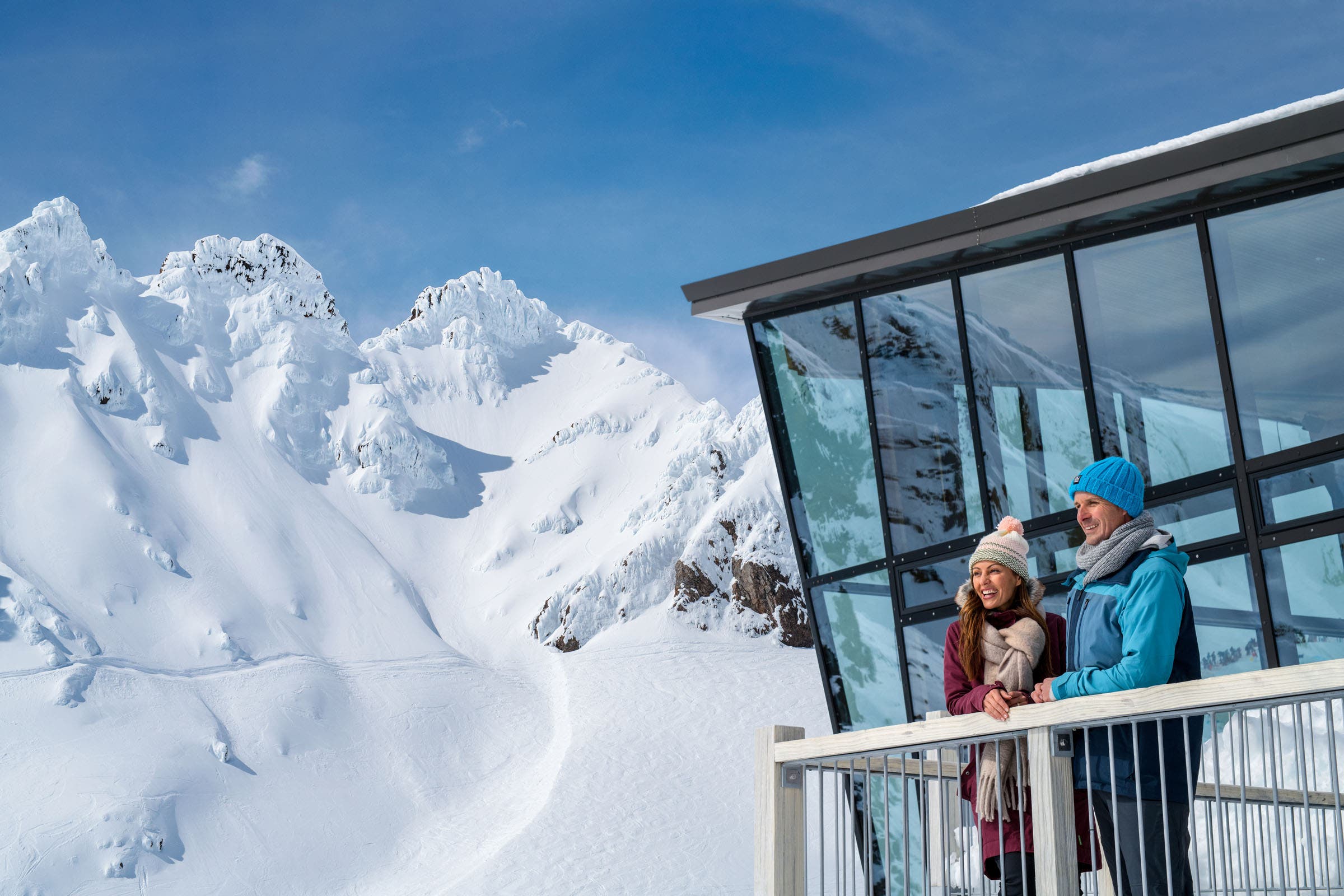
The South Island has more consistent snow and weather conditions, but don’t be surprised if your resort on either island has to close for a few days during the season due to rain or ice storms.
The resorts are also smaller than what North Americans might be used to, and the infrastructure is much more low key. There are also fewer crowds, except on school holidays.
What to Expect from Ski Instructing in New Zealand
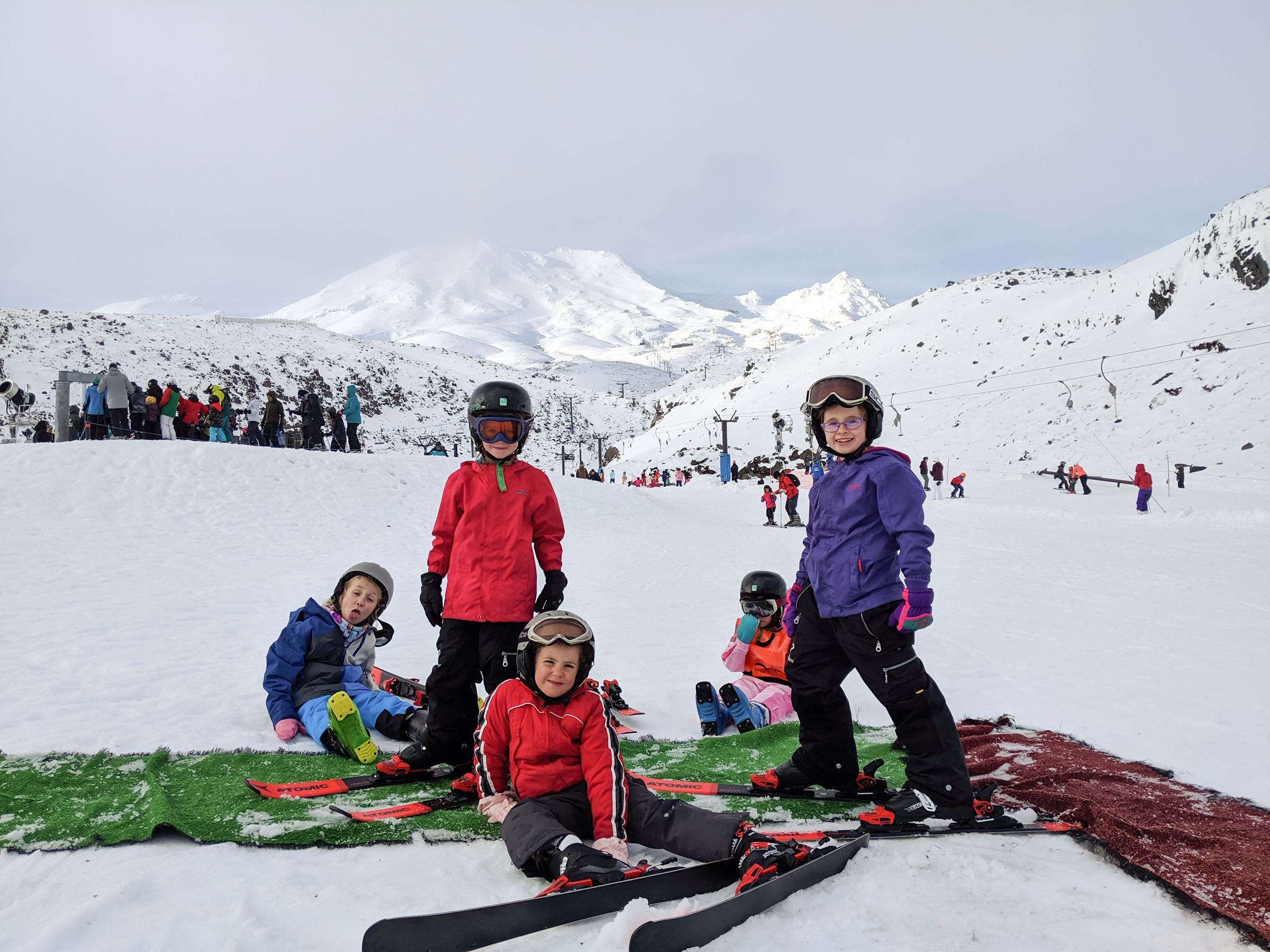
In general, the North Island of New Zealand has a bigger Maori population and a more local feel, with weekday lessons made up in large part by school groups. New hire orientations at Turoa and Whakapapa usually consist of a Maori welcoming ceremony called a powhiri at the local iwi common house to teach the new staff about the cultural and spiritual significance of the mountains. The ski areas on the South Island, on the other hand, have a more international clientele.
Lessons are taught in great variety here. There are options for all-day kid or adult lessons, private lessons in increments of one, two, three, or six hours (remember to pack snacks because the lessons tend to run into each other), plus school groups and weekend crews.
On the North Island, there’s not much room for specialization—I did a little bit of everything each week. Expect to get tons of work during the school holidays, and then relax when they’re over.
Many of the runs are narrower than in North America—which means you have to be “clever with your feet,” as my training director put it—and teach students rotational skills a little earlier than you would on the sprawling slopes of the USA. Beginner areas could be smaller than you’re used to, so get ready to stretch your creativity muscles if you find yourself on an all-day lesson with only a magic carpet and a surface lift. But that’s part of the great thing about teaching elsewhere, in my opinion: Your teaching will be improved in ways you didn’t even know it could be!
What to do During your Days Off
If you’re on the North Island, hike up to Mt. Ruapehu’s Crater Lake. From the top of the highest lift on the Turoa side, the High Noon, it should take between 45 minutes to an hour-and-a-half to get to the top, where the volcano turns into a stunning and highly acidic lake that is sacred to the local Maori (Note: the hike is longer from Whakapapa side).
The city of Taupo (pronounced “toe-paw”) has some fun hot springs and skydiving, and it’s close enough to Ruapehu so that you can go on a day off if you have access to a vehicle.
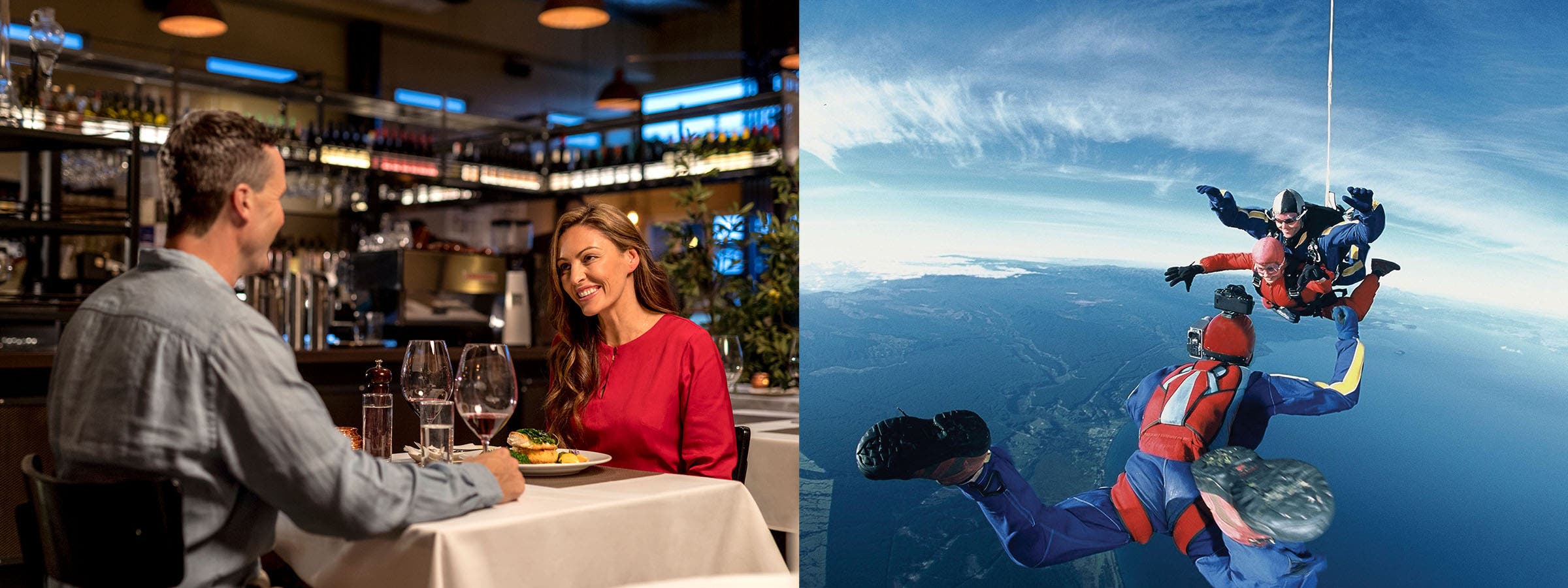
For Lord of the Rings fans, Turoa was filmed as the entrance to the Lonely Mountain in The Hobbit: Desolation of Smaug, and from Whakapapa, you can see Mt. Ngauruhoe, the perfectly conical mountain which was used as Mount Doom.
Easily accessible from both is Tawhai Falls, the waterfall and cave where Gollum was captured by Faramir in The Two Towers. Only a few hours away, Hobbiton may be cheesy, but it’s just as stunning and homey as it looks in the movies.
At the very top of the island, visit Spirits Bay at Cape Reinga, where the spirits head to their spiritual home, Hawaiki, after death. There are also sand dunes in the area that are super fun to sandboard at.
On both the North and South Islands, make sure to check out some club ski fields, where staff are either club members or volunteers. These are worth checking out if you’re a no-frills type skier, as they often cater to a more advanced and adventurous clientele in more rural locations.
Also, make sure you: Go to a rugby game; see some glow worms; look into the Maori New Year, Matariki; and enjoy the stunning waterfalls scattered literally all over the country.
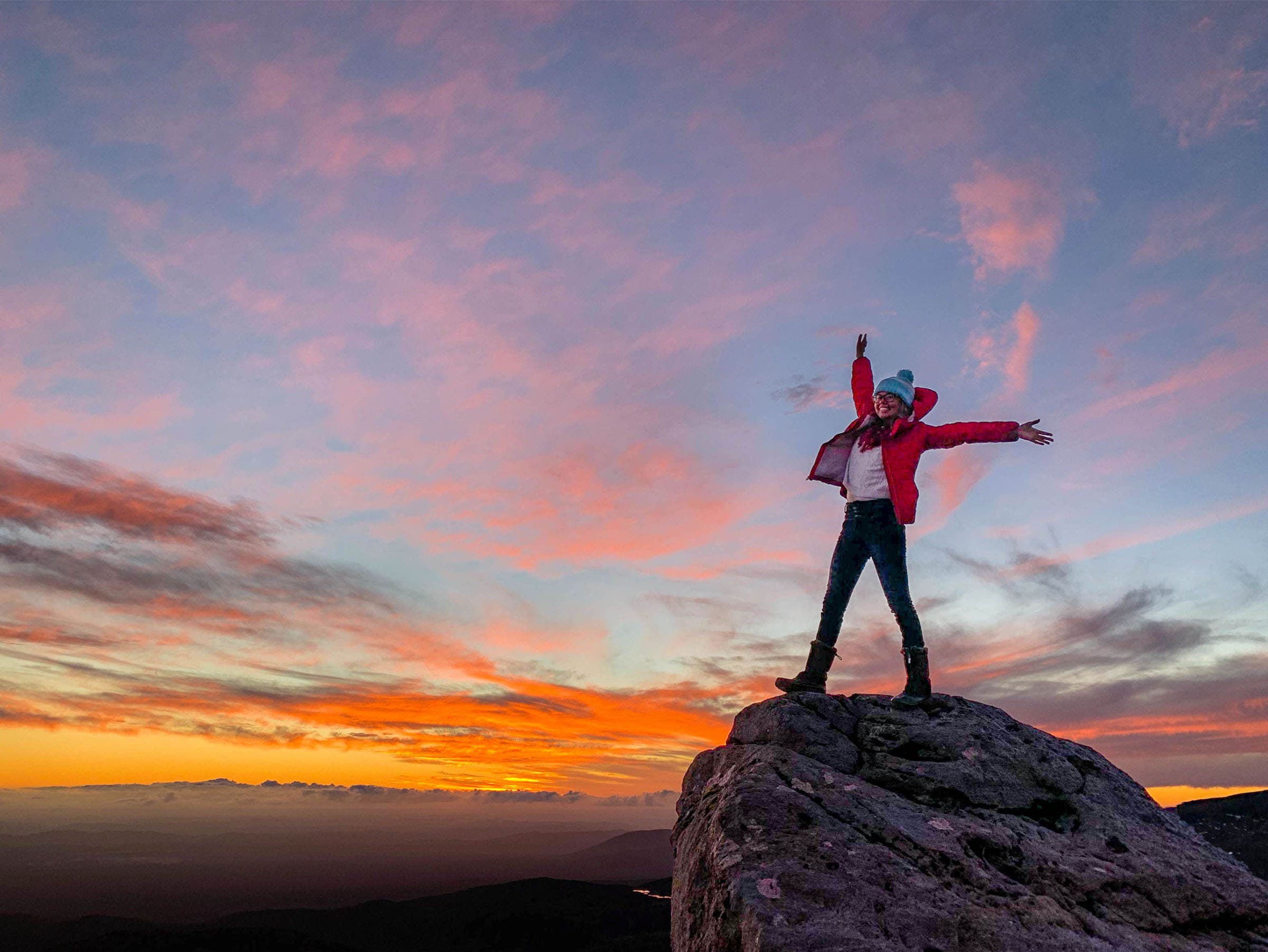
If you’re on the South Island, you’re on your own for specific activities during your days off because I didn’t make it there during my experience. I asked my friends about their favorite things to do, and it turns out there’s quite a lot: Ice climbing and heli tours on the Franz Josef and Fox Glaciers; check out Mt. Cook, the highest peak in New Zealand; sip some vino at wineries around Nelson and Marlborough; visit the beaches in Abel Tasman National Park; and find some whales to watch in Kaikoura and penguins in Timaru.
There’s also so much adventure stuff to do in Queenstown—luge riding, bungy jumping, skydiving. In other words, if you’re keen on an adventure during your days off from ski instructing, there is no shortage of fun things to do in New Zealand.